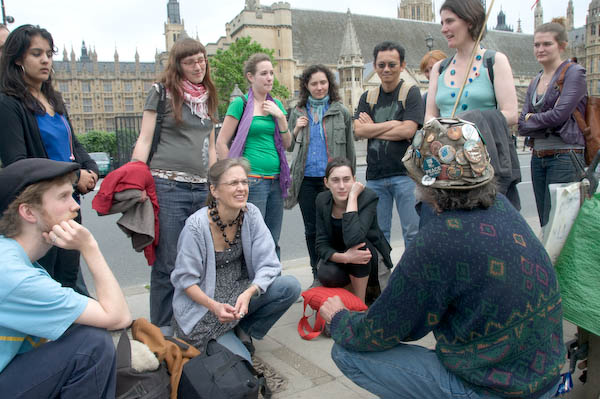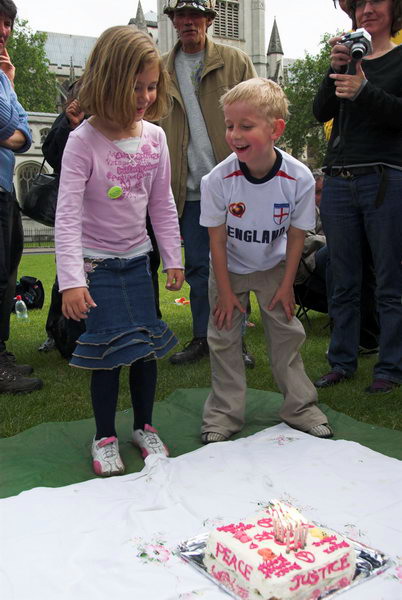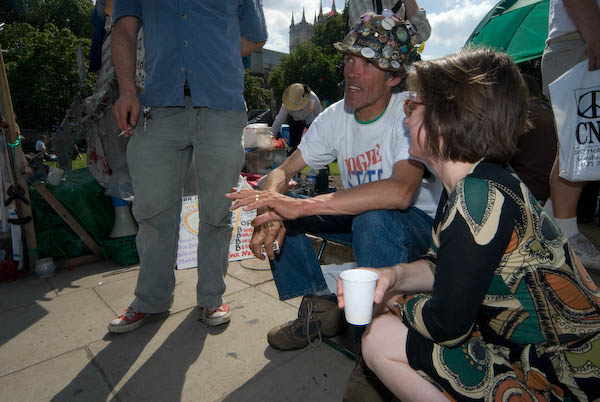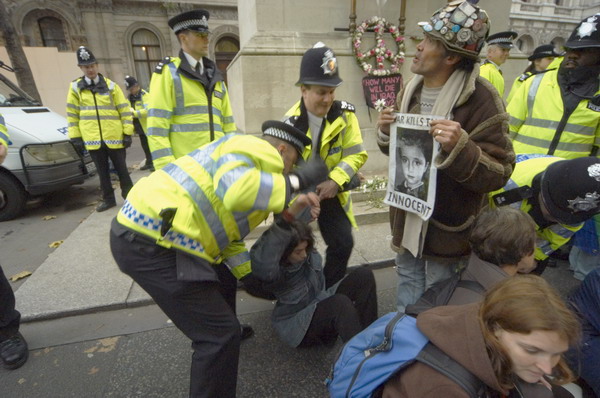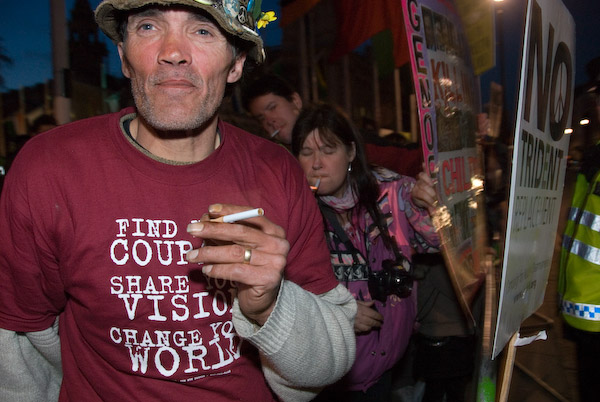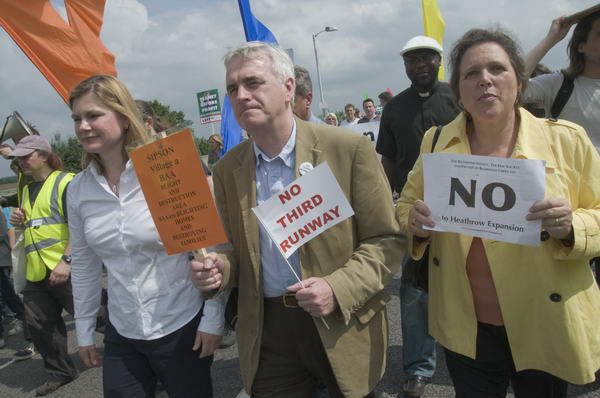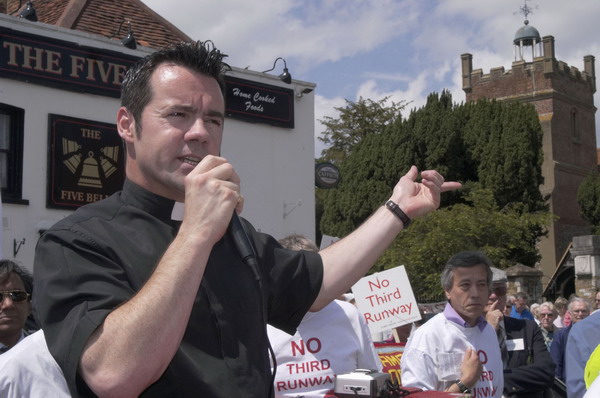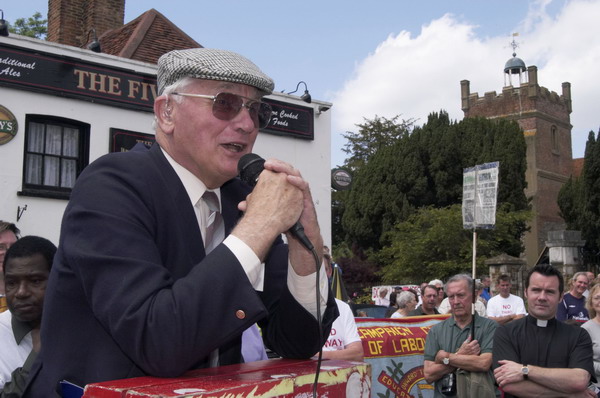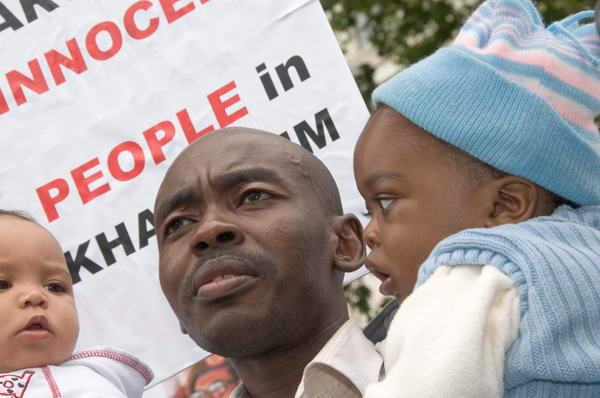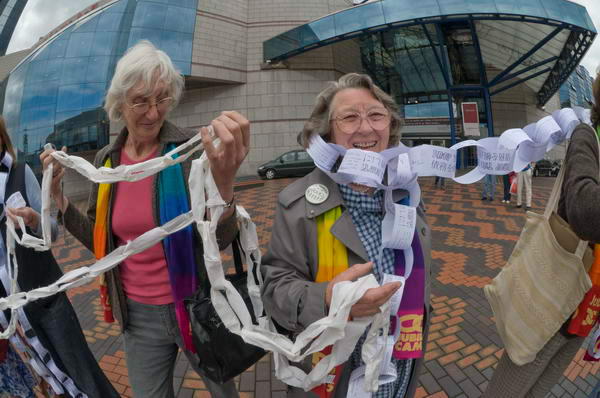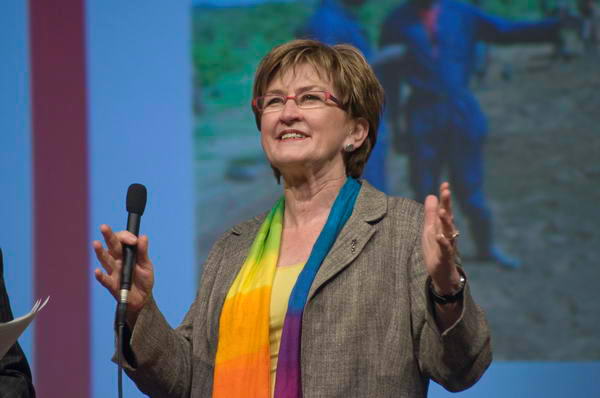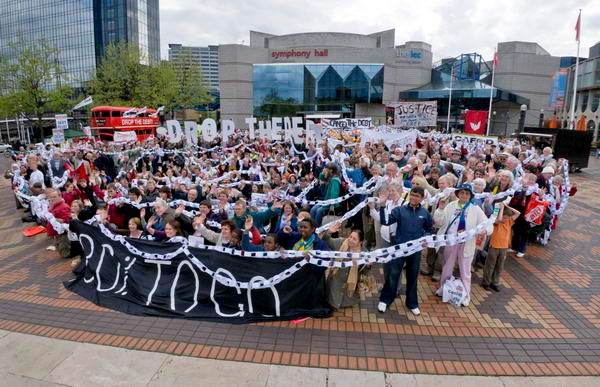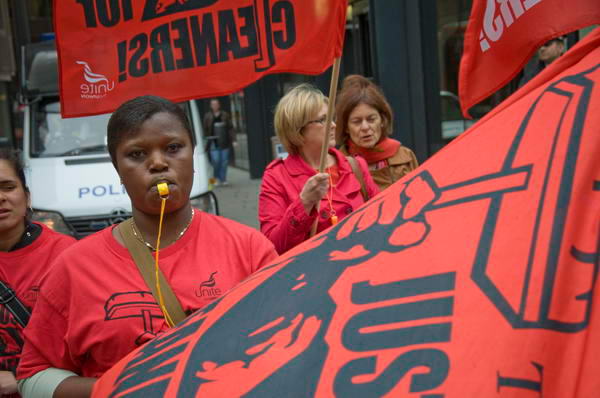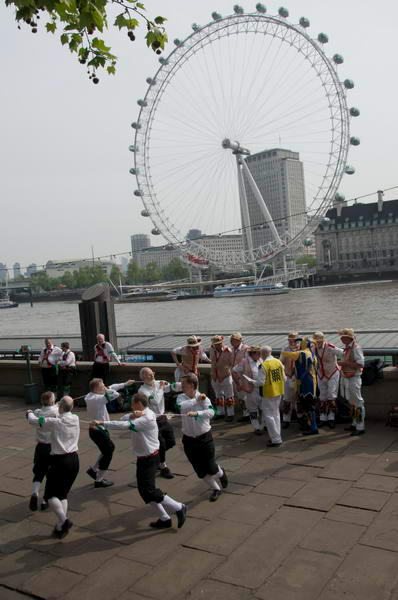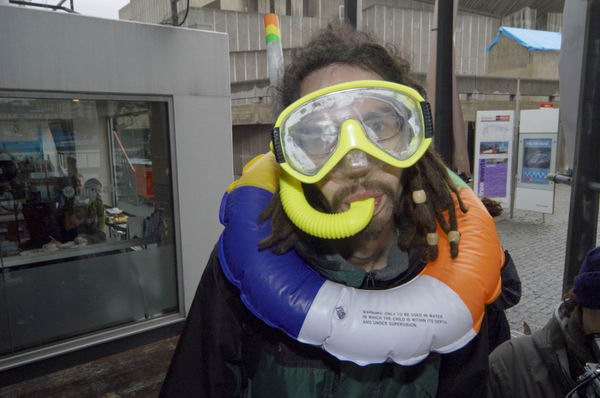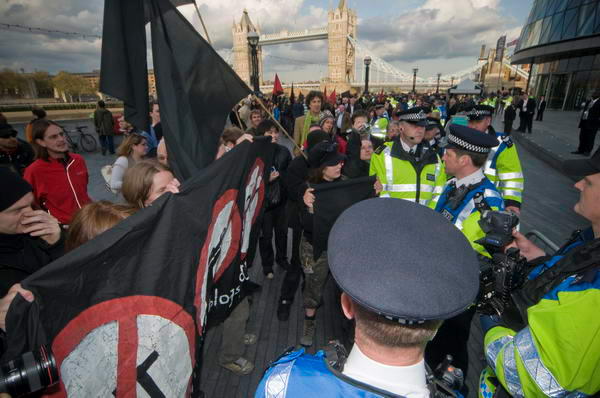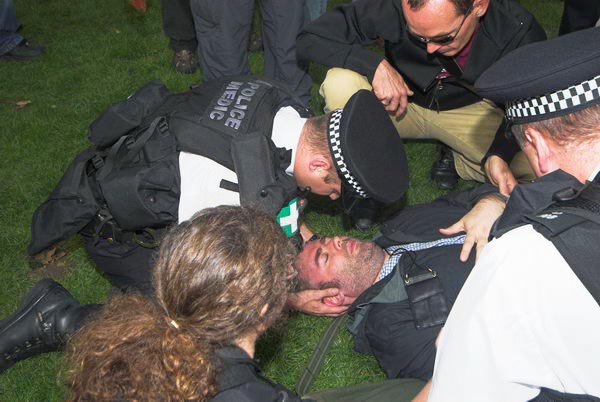Brighton residents who had marched against the war in Iraq formed ‘Smash EDO‘ in 2004 when they learnt that a factory in their city, EDO (since taken over by ITT and now known as EDO/ITT) was responsible for making guidance systems and other components that made the bombing of Iraq possible. They began a continuing series of regular demonstrations against the company that was profiting from killing people there.
As well as regular weekly ‘noise’ demonstrations, they have organised other events and meetings around the country, and made a film, ‘On The Verge’ about the campaign. They successfully fought an injunction by EDO that would have prevented demonstrations and got the local council to pass a motion upholding their right to peaceful and lawful protest following some very questionable police activity and arrests during demonstrations.
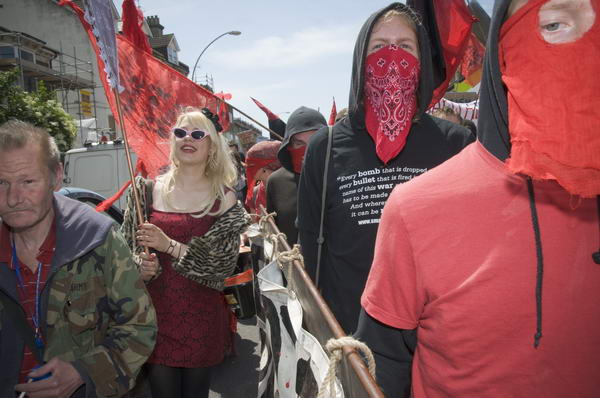
Around 600 marchers walked and danced along the main road towards EDO
On Wednesday I went to Brighton to photograph the ‘Carnival Against the Arms Trade‘ which Smash EDO had organised. It started as a lively fun event, but got a little out of hand when police tried to stop the marchers before they had reached the EDO factory.
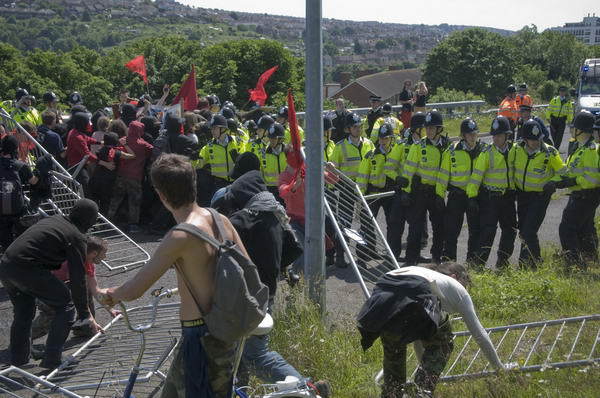
The marchers pushed over the police barriers and past the police who made only token attempts to stop them at that point. At two other points in the remaining two hundred yards or so the police again made a rather half-hearted line across the road, delaying the march slightly until people again pushed through to the factory gates.
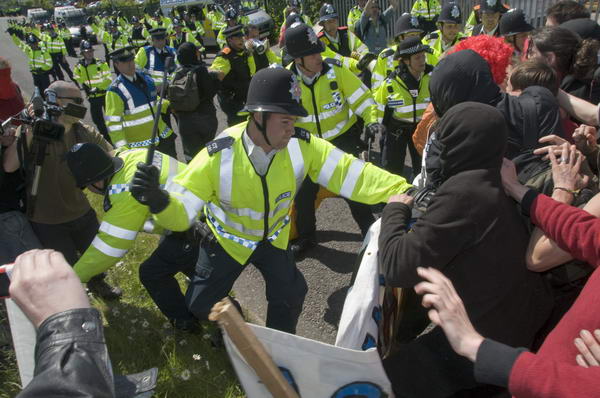
Although there had been a little pushing and shoving, and police had certainly extended and used their batons, I only saw banners rather the demonstrators being hit and in general tempers had remained fairly cool and behaviour relatively restrained, rather as if in a slightly unruly rugby scrum, although with rather more shouting. There were a lot of police, but most were just standing and watching their colleagues getting pushed back
Eventually around 300 of the marchers reached the gates (others had waited further down the hill or gone home), which were protected by a triple line of police, with more in reserve. I went back and up the hill to get an overall view and discussed the situation with some of the others around.
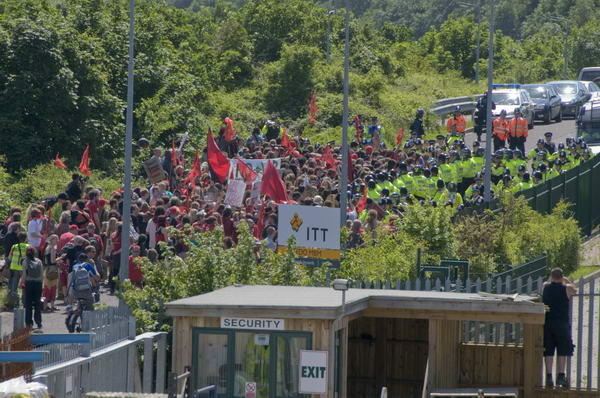
It looked like stalemate – but how wrong could I be!
The general opinion was that little further was likely to happen. The factory was surrounded by a high and secure fence and there were more than enough police to hold the demonstrators at bay, with now quite a few taking a rest further down the hill.
So I thought I’d more or less done all I could and walked down the hill to catch a bus. Maybe get home and file some pictures…
But apparently as soon as my back was turned, someone mysteriously opened a gate and demonstrators rushed in, soon followed by police. A few windows were broken and there was considerable violence, with police using batons and pepper spray as well as bringing in police dogs. It seems just a matter of good fortune that nobody appears to have been seriously injured.
Ten people were arrested, mainly for minor offences, though they were all held for 30 hours before being released on police bail without charges being laid, to return to the custody centre in early August. While they were being held, police raided a number of their homes and seized several computers, mobile phones and clothes.
You can see more of my view of the events on My London Dairy, and reports mainly about what happened after I left the scene early on Indymedia. I should have stayed until things were more obviously over, but it was a nice day and I had other things I wanted to do!
